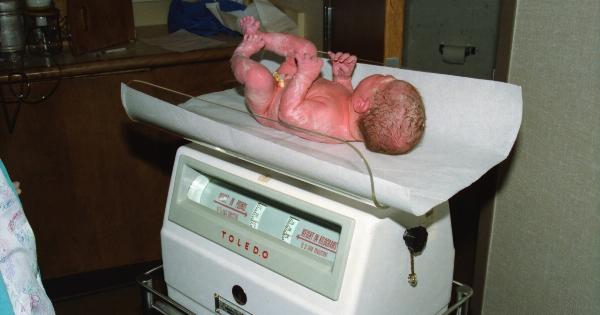Caesarean section, commonly referred to as C-section, is a surgical procedure where a baby is delivered through a surgical incision made in the mother’s abdomen and uterus.
C-sections are often recommended when vaginal delivery may pose a risk to the mother, the baby, or both. Over the years, there has been a debate over whether or not C-sections affect the weight of the child.
What is the average weight of a newborn?
The average weight of a newborn varies depending on several factors, including the duration of pregnancy and the mother’s health during pregnancy.
According to the American Pregnancy Association (APA), the average weight of a full-term newborn is approximately 7 pounds (3.2 kilograms).
Do C-sections result in a higher birth weight?
It is a common belief that babies born via C-section tend to have a higher birth weight than those born vaginally. However, research studies have shown mixed results.
A study conducted in 2014 analyzed the data of more than 3 million births in the United States and found that C-sections were associated with a slightly higher incidence of babies with a birth weight of more than 4 kilograms (8.8 pounds).
Another study, published in 2016, also found that C-sections were associated with a higher birth weight than vaginal deliveries.
However, other studies have found no significant difference in birth weight between babies born via C-section and those born vaginally.
For example, a study published in 2017 looked at the outcomes of more than 800,000 births in England and found no difference in birth weight between the two delivery methods.
What factors influence the weight of a newborn?
The weight of a newborn is influenced by several factors, including:.
- The duration of pregnancy: Infants born prematurely tend to weigh less than those born at full term.
- The mother’s health during pregnancy: Mothers who gain excessive weight during pregnancy may have larger babies.
- The mother’s age: Older mothers are more likely to give birth to larger babies.
- The mother’s ethnicity: Studies have found that Asian babies, on average, tend to weigh less than babies of other ethnicities.
Are there any health risks associated with higher birth weight?
A higher birth weight does not necessarily indicate that the child is unhealthy.
However, there are some health risks associated with larger babies, including an increased risk of shoulder dystocia during delivery, which can potentially lead to nerve damage in the baby’s shoulder. Additionally, larger babies may be more prone to certain health conditions later in life, such as obesity and type 2 diabetes.
Do C-sections increase the risk of a child being overweight later in life?
There is some evidence to suggest that babies born via C-section may be at a slightly higher risk of being overweight or obese later in life.
A study published in 2018 examined the long-term effects of C-section delivery on the risk of childhood obesity and found that children born via C-section were 15% more likely to be obese than those born vaginally.
However, it is important to note that the overall risk of childhood obesity is influenced by a multitude of factors, including genetics, the child’s diet and physical activity levels, and the mother’s health during pregnancy.
Conclusion
While there is some evidence to suggest that C-sections may result in a slightly higher birth weight, the overall impact on the child’s health is not clear.
Many other factors influence the weight of a newborn, including the duration of pregnancy, the mother’s health during pregnancy, and the mother’s age and ethnicity. Additionally, while there is some evidence to suggest that C-sections may increase the risk of childhood obesity, the overall risk is influenced by a multitude of factors.






























